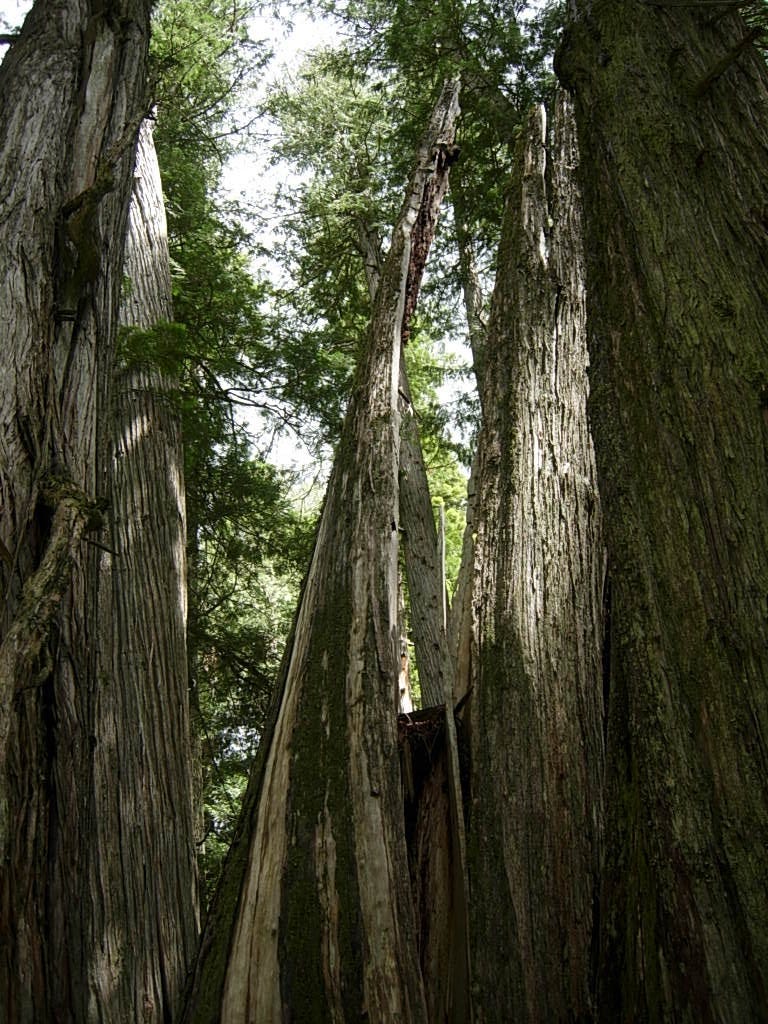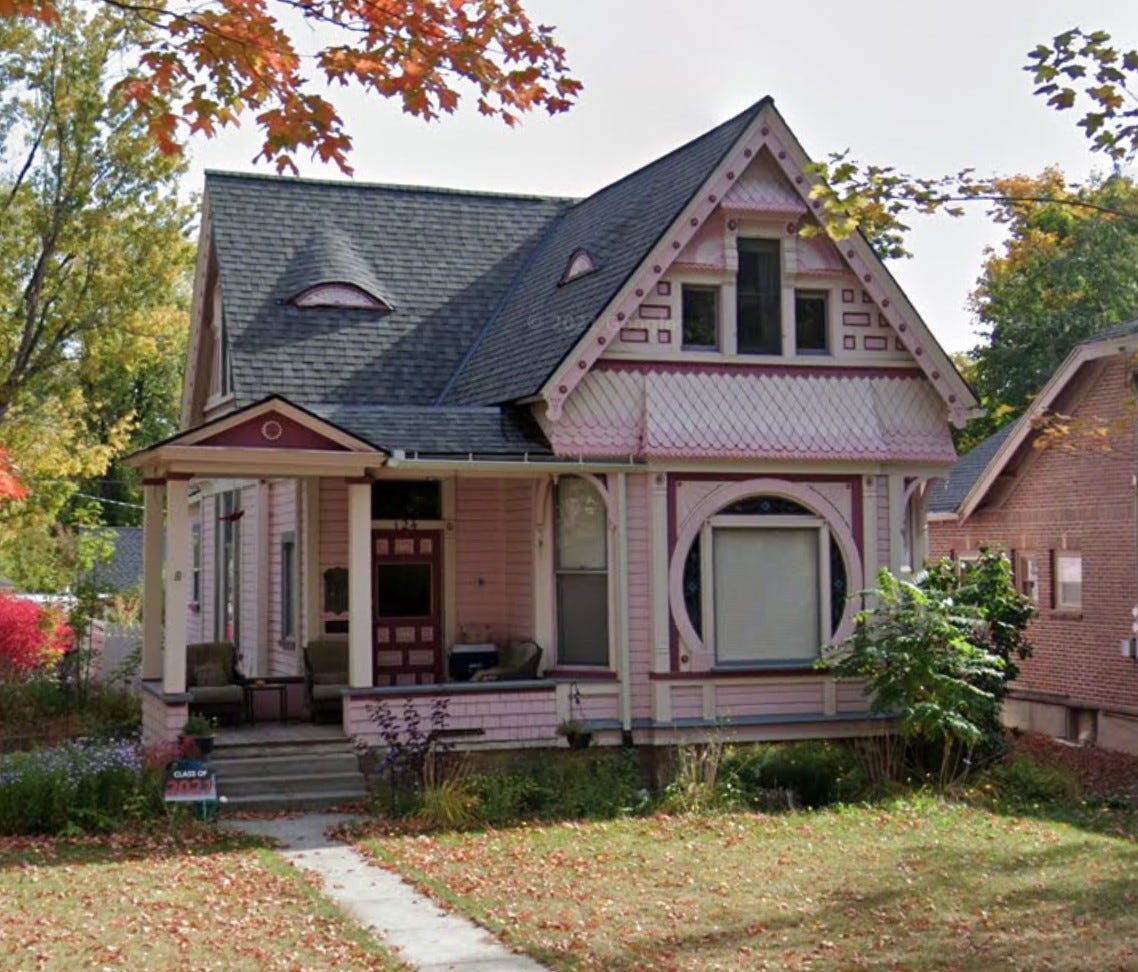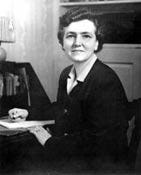Transformations in the Forest
Strangers in the Forest, a Novel from the 1950s Set in Northern Idaho, Tells a Story of Conservation
The Library weeks for Taking Bearings help me read things I might not otherwise. Strangers in the Forest, a novel by Carol Ryrie Brink, has been sitting on my shelf for years, unread. Given my recent focus in this newsletter on forests, I realized it was time to read it.
Brink grew up in the town I worked in for two decades, and Strangers in the Forest takes place in a region I know. And its historical setting is very familiar. Despite that familiarity, I had relatively low expectations for the book. A 1959 novel billed partially as a romance had me wondering how connected it might be to history and place – the purported focus of my newsletter. I needn’t have worried. Read on!
The Author, Carol Ryrie Brink
In the heart of a Moscow, Idaho, historical district is a conspicuous house. Pink with unusual details, the home was the award-winning author Carol Ryrie Brink’s. Not especially well known, Brink authored Caddie Woodlawn in the Depression, a book for children that won the Newbery Medal. She also wrote a series of books that took place in northern Idaho, including Buffalo Coat, a book I read after it was recommended to me when I first moved to Moscow. Like many of Brink’s books, Strangers in the Forest is based loosely on real people and real events – in this case her aunt and Brink’s experiences with her.
Plot-in-a-Nutshell
The novel takes place between 1908 and 1911 in the deep woods of northern Idaho near the North Fork Clearwater River within a national forest. A sister (Meggie Carney) and brother (Jeff Carney) and his wife (Lorena) head into the forest reserve to stake homestead claims. Their intent is to stake the claims, gain titles to the land, and sell them for timber. Joining them was an botanist (Bundy Jones) who worked for the Forest Service, sent to spy on the would-be homesteaders. While the homesteaders built their cabins and tried to get their gardens to yield self-sufficiency, human drama unfolded. Most of that concerned various loves, mostly unsatisfactory. All combusted during the famous 1910 fires.
Conservation Context
For those involved in the movement, conservation offered a crusade-like quality. Believers found nothing less than world peace and political liberty at stake. That may seem too much to expect from reducing waste of resources and putting use on a sustainable basis. But those involved at the turn of the 20th century viewed conservation as a cornerstone for a larger political (and often personal) philosophy. In Strangers in the Forest, Bundy personified this perspective.
The antagonists Bundy faced were lumber companies intent on looting the public’s forests and the homesteaders who fraudulently claimed land for homes but who intended to sell to timber interests. The Carney siblings had a timber baron uncle who had once loved the woman Jeff married. (Perhaps Brink lacked subtlety in her characterization, but for those of us who do not always read well between the lines, these obvious symbols are helpful!)
To a small degree the plot revolved around the classic “humans vs. nature” trope. Brink wrote of a homesteader’s efforts,
Green and golden, the forest watched in vegetable patience as a man tried to plant civilization for the first time in ancient soil.
But the larger plot focused on the conservation cause. A stage driver bringing all the characters into the Idaho forest said, “All the lumber companies want is [to] cut fine trees and let the dirt underneath go plumb to waste.” To conservationists, such activity was sinful and against the public interest. Brink sprinkles in such attitudes:
It was if, Bundy thought, the end of the wagon road marked the end of any public responsibility Whoever went beyond that point was bound to take things as they came. It was every man for himself.
Ideal vs. Real
As clear as conservation principles were to those involved, life in the Idaho forest – and relationships within it – complicated such ideals. Mostly, Jeff and Lorena were miserable in their attempt to homestead and anticipated when they could sell and leave the wilderness. Meggie began the enterprise with a similar lack of preparation and interest; however, the woods demanded self-reliance, and her confidence grew and she appreciated the homestead as a real home, not merely acreage of timber-to-be.
This transformation was hard won. At times, the forest “seemed to be limitless and so impersonal that [Meggie] felt it was hostile to her.” During one journey in a blizzard when Meggie’s feet nearly froze, she was revived in her cabin. “The fire symbolized continuity, it was life and hope.” The moment was a personal transformation when the forest no longer felt hostile.

For his part, Bundy remained staunch in his conservation convictions. As he grew to count the Carneys as friends, he kept steadfast that this was forestland not suitable for homesteading. Nevertheless, Brink noted that,
Integrity, loyalty to an abstract principle, these could become disturbing and unnatural qualities among friends.
Climax
After two years in the woods (and two years spying), all parties learned the truth. The Forest Service challenged the homestead claims, and at a small public meeting, Bundy fessed up to his role. The uproar, compounded by various personal issues, was upstaged by a massive fire, the Big Blowup of August 1910 that turned the woods into a “black skeleton forest.” It brought many people together: “To save the forests became a great regional endeavor.”
For Meggie, Bundy, and others the fire also brought tragedy and transformation (fire always is a crucible). And the conservation vision of the Forest Service suffered. The agency, after all, didn’t stop the fire and relied not on professionals but any body it could draft into firefighting duty. Mostly, the Forest Service recommitted, but it wasn’t always easy.
In the aftermath, Bundy
was haunted by futility: the futility of trying to save the forest, the futility of trying to homestead, the futility of trying to mine gold, the futility of loving where love could not be returned.
Bundy opposed the homesteads but then left the Forest Service to teach botany (with his second-choice love, which readers understand was the better choice).
Assessment
As a romance, the book succeeds and is familiar. As a conservation tract, there is some ambivalence. It acknowledged the wrongness of fraud and favored the grand, crusading vision of Roosevelt-era conservation. Yet, that vision seemed to fall short, too, as though the ambivalence of the land made political ideals a poor match.
Brink’s novel was a faithful historical account. She also drew from her own experience staying for a time with her aunt on a homestead later found not to be in compliance with homesteading regulations. When the novel was published, Reader’s Digest condensed it an reissued it in their popular series, and the Chief of the Forest Service vouched for its accuracy. Brink captured the context well.
No doubt, readers in the 1950s – a time when conservation was beginning to heat up as a political issue again – would have been drawn to the forest and hoped for its protection.
Final Words
The themes of Strangers in the Forest resonate with much of my work that I’ve referenced here before. It also is part of Idaho history, a onetime specialty of mine I don’t typically mention here. I once edited a book on the state’s history, Idaho’s Place. It would be a great place to learn more of the history embedded in the novel, including the state’s environmental and political history, as well as women’s history.
As always, you can find my books, and books where some of my work is included, at my Bookshop affiliate page (where, if you order, I get a small benefit).
Taking Bearings Next Week
Next week is The Wild Card, which offers me great flexibility (and endless choices). To see what I come up with, stay tuned!







👍👍🌿🌿🌳🌳